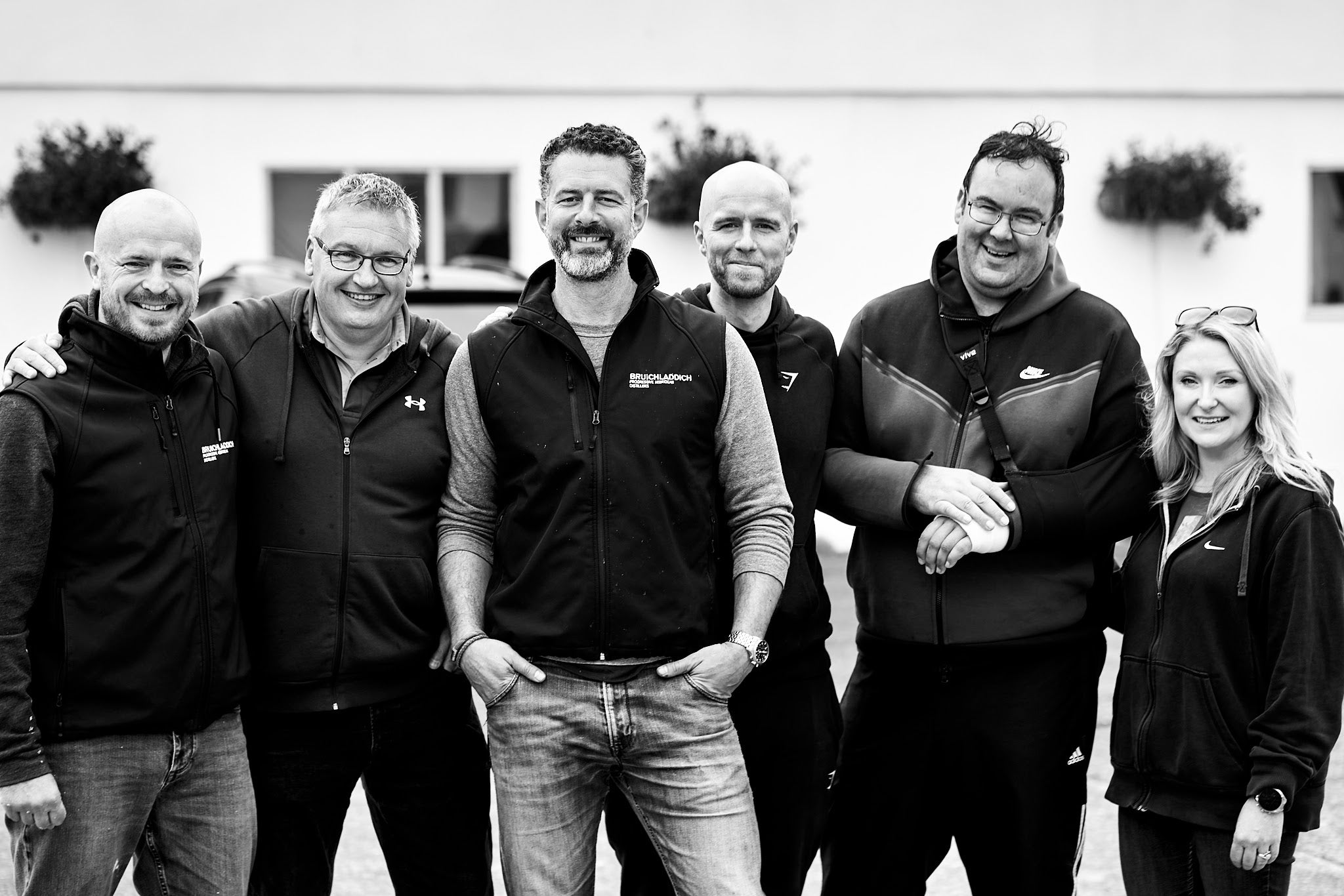EXPERIMENTS IN ISLAY-GROWN RYE
- 6 mins
Our Production Director, Allan Logan and Head Distiller, Adam Hannett, first announced they had successfully distilled a spirit using an Islay-grown rye in 2017. Allan said at the time “We had been looking at experimenting with different grains for a while – and we feel that using rye could give us access to interesting new styles of spirit. We have managed to create around 6,500 bulk litres and are filling a mixture of casks – first-fill bourbon and virgin American and European oak.”
The rye was sown at Coull Farm on the Rhinns of Islay by Andrew Jones, who has been growing barley for Bruichladdich Distillery for a number of years. The crop grew and ripened well but the Hebridean weather prior to harvest was very difficult and this inevitably impacted on the yield. There were not three dry days together from 10th August 2017 through till the end of October 2017 and it was tricky both getting the crop dry enough – and having the ground hard enough to take the combine. Happily, the Ballinaby Field at Coull is a sandy loam which drains quickly.
Eventually Andrew managed to get a window of weather that allowed the harvest of his ten trial acres. He had customised his Claas combine with special crop lifters, and then combed laterally across the rye, which had been flattened by the wind and rain. He managed to bring in 17 tonnes – which was a triumph in the circumstances.
Allan and Adam decided to use the rye unmalted and settled on a 55/45 rye/barley mashbill, taking the grain down to 5% moisture content prior to milling. This was all frontier stuff as rye grains are much smaller than those of barley. The kernels, like those of wheat, have no husks, which taken together with the high content of sugars like fructosans and sucrose and the soluble polysaccharide beta-glucan, means it has a tendency to go gloopy, holding onto water at the drainage stage; in short it’s “a nightmare to mash”.
We reduced our regular mash size from 7 tonnes to 4.5 (similar to the approach we take with Bere barley) and mashed each load slightly differently to test different ways of working.
Employing our usual yeasts, we observed the subsequent variety in the behaviour of the different washes during fermentation; each had been derived using a slightly different technique and so we were able to evaluate the results and learn as we went along.
Allan, at the point of distillation, “Distilling rye is quite a challenge but happily the end result has been very worthwhile. There are noticeable differences from malted barley, in the aromas through the fermentation, to tasting the new make spirit. It’s got a really sweet, floral aroma but peppery with added spices…”
A number of years on, we continue to wait and see how the spirit develops in the cask. Which is a fascinating prospect.
Regulations will of course preclude this from ever being presented as single malt Scotch whisky, but as Progressive Hebridean Distillers, we are all about exploring new flavours and variety. We were encouraged enough by the results to have talked to Andrew Jones about doubling the acreage of rye at Coull.
Rye has some attractive benefits for farmers looking to improve soil quality through crop rotation. It is very hardy and keeps a field green through the winter after being planted in Autumn. This is why it's called a cover crop. Meanwhile, below ground, it captures nutrients in the soil through its quick growing fibrous root system. Looks like it could be a win, win.
You can watch a video of one of the experimental rye mashes with Adam, Gillie and Graham here.


